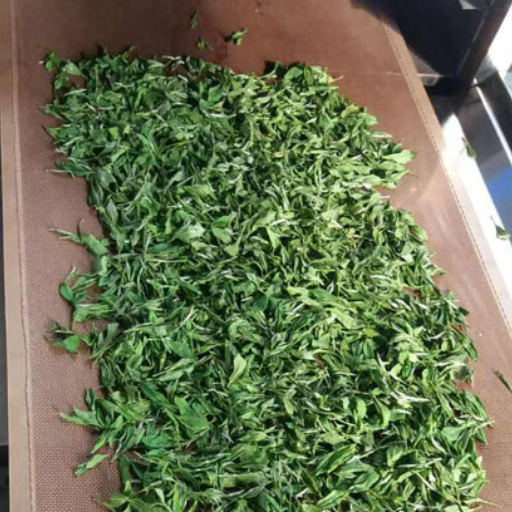Many societies have included tea production in their customs and practices for centuries. However, things need to change as the world seeks more high-end tea. That is where microwave tea drying equipment comes into play; it can completely change how we process teas. This blog post will look at what microwaves do to drying tea leaves: effectiveness, better quality, and going green. With this knowledge, readers should be able to understand that modern breakthroughs are now connecting traditional methods with new ideas for making tea.
What is Microwave Tea Drying Equipment?
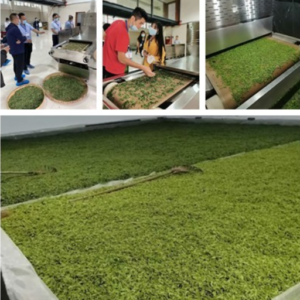
Image source: https://www.linkedin.com/
The microwave drying device for tea is an advanced technological means that aims to accelerate and improve the process of drying tea. This could be achieved by using electromagnetic waves to get rid of moisture rapidly and homogeneously, unlike other ways like traditional methods that depend on long-term heating by firewood or coal, for example. The advantage of this equipment is that it not only speeds drying but also keeps necessary nutrients and smell substances so that tea can become better quality. Furthermore, compared with other methods, microwave tea drying has a higher energy-saving rate and lower environmental pollution, thus cutting down on carbon emissions produced during the tea-making process.
Understanding Microwave Drying Technology
The drying technology of microwaving utilizes dielectric heating principles where polar molecules or water are disturbed through penetration by microwaves in the tea leaves, thus leading to oscillation and production of heat. These methods heat inside, so they remove moisture more evenly than other conventional systems. In a microwave drying chamber, the process involves putting tea leaves into it then applying electromagnetic radiation usually at around 2.45 GHz frequency, this causes rapid heating from within as microwaves interact with water molecules thereby facilitating quick evaporation of moisture.
Among the things that make microwave drying beneficial is that it can keep the chemical composition of tea leaves intact. When catechins, theaflavins, and essential oils are exposed to high temperatures over long periods, as done in traditional drying methods, such compounds can easily be destroyed or degraded by heat, which is uncommon in this new way. This means there will be minimum loss in nutrition and flavor of teas preserved during their manufacture through microwave energy, saving more resources than any other method and time, hence reducing overall cost for production while conserving the environment, making it sustainable throughout the tea industry.
In a word, the microwave modernizes efficiency while being eco–friendly in terms of dryness and preservation, which is traditionally used on teas; thus, it produces good-quality tea that also contains energy-giving nutrients.
The Principle of Microwave Drying in Tea Production
The tea industry uses microwave drying based on the interaction between electromagnetic waves and matter. In this process, microwaves go through tea leaves, making polar molecules like water move to and fro, hence generating heat inside them. The system takes away moisture equally, leaving no part wet. Also, it saves the time needed for drying, thus being faster than other methods. It differs from traditional ones because while preserving catechins or theaflavins is good for health, microwave drying does not destroy any chemical component of tea because they are not exposed to high temperatures for long hours, and only short waves pass over them. Furthermore, being an energy-saving technique can also be considered environmentally friendly since it cuts down production expenses while reducing carbon emissions while making tea.
Advantages of Using Microwave Tea Drying Equipment
Using a microwave tea drying machine has many benefits:
- Better Preservation of Quality: By limiting the exposure of leaves to high temperatures for long periods, this method keeps most of their nutrients and flavor profiles intact. This leads to higher retention levels in essential components like catechins, theaflavins, and essential oils, resulting in an improved quality product.
- Uniform Drying: The technology ensures that all parts are evenly dried out, creating a consistent texture throughout. Such evenness in drying is necessary for making good tea.
- Energy Saving: Microwaving consumes much less power than other methods used in drying tea. It takes shorter durations and less energy to achieve the required moisture content, thus cutting down on production expenses and reducing environmental impact.
- Increased Speed: This technique dramatically reduces the time taken during drying compared to traditional methods, thereby enhancing overall output efficiency and enabling quick responses to market needs.
For these reasons, microwave tea drying equipment represents a significant advancement toward better efficiencies and quality within modern-day tea manufacturing processes.
How Does Microwave Tea Drying Work?
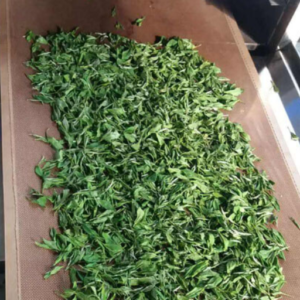
Microwave tea drying operates by utilizing electromagnetic waves to heat the moisture found in leaves. A holder where tea leaves are placed inside a microwave chamber comes first. When switched on, the microwaves go through into tea leaves and make water molecules move back and forth, producing heat energy. This kindling from within dries them uniformly because it evaporates all their wetness more effectively than any other way can do so since this process occurs throughout every part of them at once. The desired degree of dryness should be achieved within minimum periods required for preservation or storage purposes but also long enough not to destroy essential elements within teas like flavor compounds, among others; hence, time must be precisely controlled along with temperature during drying processes so that both quickness as well uniformity may be attained which will keep intact with various properties indicative quality standards met as well known methods employed elsewhere too unnecessarily use up large amounts of power or take much time for completion. At the same time, this technique saves energy besides being fast enough, thus making better grades in tea possible without much work.
Step-by-Step Process of Microwave Drying
- Producing Tea Leaves: Select high-quality tea leaves at the beginning. Make sure they are clean and do not have any foreign objects.
- Loading the Microwave Drying Chamber: Put the tea leaves evenly on trays in a microwave drying chamber. It is essential to distribute them uniformly for equal drying.
- Setting the Parameters: Program the microwave dryer with a suitable power level and drying time. The settings can vary depending on the type of tea and desired moisture content.
- Initial Warming Phase: Start by turning on the microwave oven. In this phase, the tea leaf warms homogeneously because microwaves penetrate it.
- Main Drying Phase: Keep supplying energy from the microwave during the drying process. Water molecules inside tea leaves vibrate and produce heat, which causes the innermost part to lose its wetness quickly through evaporation.
- Cooling and Final Check: Allow tea leaves to cool gradually after the dry cycle is completed. Confirm that they are adequately dried while still maintaining their quality.
- Packaging: When tea leaves have been dried rightly and cooled down, pack them into bags or containers that can resist moisture to keep the natural taste fresh for a long time.
This method ensures the high-quality production of teas with minimum energy used, and the processing duration is saved.
Key Components of a Microwave Drying Machine
- Microwave Oven: The microwave oven is known as the magnetron based on most common understandings. This is because it serves as the center for drying equipment, generating microwaves that heat and remove moisture from tea leaves.
- Drying Room: Tea leaves are put in a closed space called the drying chamber while they are being dried. It ensures even distribution of microwave energy around the product so that it dries uniformly.
- Controller: The control system uses programmable logic controllers (PLCs) or some similar interface through which operators can set up and monitor power levels, dry time, and temperature, among other things. With this system, one can make different adjustments during the drying process for better results.
- Circulator: For proper drying throughout, circulation systems ensure an equal distribution of microwaves within chambers used for heating. Fans may be involved here to ensure the movement of air around tea leaves and microwave energy.
- Sensor for Dampness: To check quality, moisture sensors continuously test the moisture content of tea leaves. These help adjust process parameters until the desired dryness is attained.
- Safety Measures: Microwave shields and interlocks are essential safety precautions against accidental exposure to radiation caused by microwaves when they leak out from the dryer. Such mechanisms guarantee the safe operation of these machines.
- Cooler: After drying, a cooler should be used to bring temperatures back into the ambient range; otherwise, this residual heat may interfere with quality standards.
Knowing these essential parts will enable you to work effectively with the appliance and maintain it over its lifespan.
Differences Between Traditional Drying Methods and Microwave Drying
As an alternative to traditional drying methods, like sun and hot air drying, which depend on natural or convectional heat to remove moisture from tea leaves, these methods are time-consuming since environmental changes influence them. In the case of sun drying, for example, it exposes them to contamination because they are left in the open air, where dirt can fall on them and alter their taste. Controlled hot air drying may overheat them sometimes and thus destroy essential oils and nutritional components.
On the contrary, microwave drying uses microwaves that make water particles in tea leaves vibrate faster, evaporating quickly and uniformly. This technique is much faster than any other previous method because it ensures evenness throughout the product. Unlike usual, this one doesn’t allow bacteria or other microorganisms to grow on its surface, thus keeping all nutritional values safe from being destroyed by such factors. Also, with a microwave dryer, you can set power levels at different points during drying so as not to take too long yet achieve the desired moisture content quickly.
What are the Benefits of Using Microwave Tea Drying Equipment?
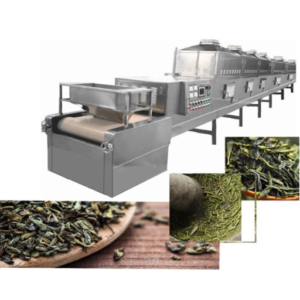
There are a few significant advantages to using tea dryers with microwaves. For one thing, it is much faster than other ways of drying and thus increases productivity. Another point is that this approach uniformly dries things, so there will be no variations in quality caused by unevenness or contamination during the process. Additionally, microwave drying saves the aroma and nutrients of tea leaves, which sustains their nutritional value and taste properties. Finally, microwaving can be controlled very precisely – power levels may be adjusted finely enough for required humidity levels to be reached within necessary time limits during drying when moisture is being taken out from herbs or plants used in making drinks such as coffee, especially when considering electric powered appliances explicitly designed for this purpose.
Efficiency and Speed in Tea Production
Microwave tea dryers have greatly improved the efficiency and speed of the tea industry. Such modern technology decreases total drying duration dramatically, usually by a fifth of what would be required through traditional means. Microwave energy can be applied uniformly to dry all leaves evenly, thus removing inconsistencies from hot air or sun drying methods. Besides improving quality, it also quickens production, enabling one to meet higher demand without lowering standards. Additionally, microwave systems allow for precise control over power levels and drying time, which can be adjusted to suit different teas more accurately than any other method available today . The final product is a uniform final product that still contains essential oils, nutrients, and flavor while efficiently meeting the desired moisture content.
Quality and Uniformity of Dried Tea Leaves
To determine the final product’s excellence, one must consider the quality and evenness of dried tea leaves. This is where microwave drying technology creates uniform and stable drying conditions. Microwaving each leaf with equal heat through precise microwave energy application guarantees consistent moisture content throughout all teas, thereby keeping their inherent goodness undisturbed. Unlike in conventional drying methods which may over-dry some leaves due to uneven distribution of warmth or undersize them because it lacks enough hotness; microwaves offer high levels if homogeneity. This method preserves necessary oils and vitamins found in teas which are essential for their taste and health properties as well. Through constant drying, producers can make tea that meets high standards, thus ensuring better consumer satisfaction with superior products.
Cost-Effectiveness of Microwave Tea Drying
One benefit of microwave tea drying technology is its significant cost-effectiveness, which makes it attractive to tea manufacturers. To begin with, microwave systems’ energy consumption is lower than traditional drying methods, henceforth implying less operational cost. In this case, efficiency comes from applying power directly into leaves, thereby reducing heat loss and making the process cheaper.
On the other hand, the speed involved in microwave heating reduces processing time, thus increasing production rates significantly and shortening the duration before products reach markets. Due to the quickness in which they are dried, manufacturers become capable of handling huge masses of tea within limited hours, optimizing labour and resource utilization.
Additionally, such dryers require little maintenance while serving a more extended period, reducing long-run servicing and replacement costs. The initial investment needed for microwave technology is quickly compensated for by these savings over time, making it suitable financially even for large or small-scale tea producers.
To conclude, microwave tea drying is cheap because of its energy-saving nature, which reduces processing times and decreases maintenance expenditures, among other things. This leads to lower total expenses incurred during production, thus increasing profitability for manufacturers at large.
Who Supplies Industrial Microwave Tea Drying Equipment?
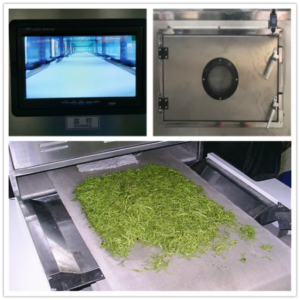
Many reliable firms produce industrial microwave tea-drying equipment. Sairem is one such company; it provides state-of-the-art microwaves and radio frequency systems designed specifically for food processing. Püschner Microwave Power Systems is another company worth mentioning, as it produces highly efficient microwave dryers and heaters. In addition to MAX Industrial Microwave, there’s also Processing Technologies, Inc.(PTI), which offers bespoke microwave solutions designed to meet tea producers’ requirements and achieve the best possible quality during the drying process.
Top Suppliers of Microwave Drying Machines
One must identify providers reputed for their advanced technology and dependability to acquire microwave drying machines from the best suppliers. These are the three top companies in the sector:
- Sairem: This company manufactures cutting-edge microwave and radio frequency systems that can be custom-made to suit different needs in the food industry. Their equipment’s main aim is to ensure fast, even drying, which makes it perfect for tea manufacturers who want high-quality final products.
- Püschner Microwave Power Systems: They are known for their energy-saving microwave driers with high-efficiency levels. Püschner systems also offer accurate control over the drying process, ensuring uniformity in results and meeting standards set in large-scale production environments.
- MAX Industrial Microwave: Specializing in custom-designed microwave systems, MAX Industrial Microwave provides solutions specifically catering to tea manufacturing requirements only. Their machines have been engineered to give optimum performance during drying, ensuring the quality output and reliability necessary for manufacturers to achieve the desired levels of productivity.
These firms sell top-quality microwave drying machines and provide knowledge and support that enables tea producers to optimize their drying processes.
How to Choose the Right Microwave Tea Drying Equipment Supplier
If you want to choose a microwave tea-drying equipment supplier, there are some things that you need to do. Here is a list of what I think are the most important steps:
- Reputation and Reviews: The first step is researching suppliers online and reading customer reviews on industry-specific forums. You should select only companies with good feedback from their clients and a strong reputation in the market.
- Technology and Innovation: Choose suppliers with state-of-the-art microwave drying technology. Some examples include Sairem, Püschner Microwave Power Systems, or MAX Industrial Microwave because they provide innovative solutions with advanced technologies that guarantee an even drying process at high-efficiency levels.
- Customization and Flexibility: It is essential to verify whether the supplier can offer custom-made machines to meet your individual needs ideally. This means that you must be able to modify or adapt certain parts of these devices to fit them into your production line, thus achieving the desired outcomes eventually.
- Energy Efficiency and Environmental Impact: The energy efficiency of any given machine matters, too. Therefore, you need to look for one that uses less power. This will save money and protect the environment through sustainable practices.
- Support and Service: Find out how supportive the company is where you plan to buy microwave tea dryer equipment. Does it provide enough customer support services even after sales? A reliable technical team will always ensure that all machines operate at their optimal levels by promptly addressing any emerging issues.
-
Cost vs. Value: Price should never be used alone as a basis for decision-making when purchasing goods or services, especially industrial products like dryers; instead, consider other relevant factors such as quality, long-term benefits, etcetera.
Considering reputation, innovation prowess, customization capability, and flexibility while choosing a supplier who offers value for money spent through technological advancement and environmental friendliness will ensure success in adopting a microwaved dried tea leaves system during the manufacturing process within your firm.
What are the Applications of Microwave Tea Drying Equipment?
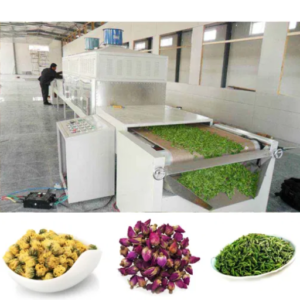
The tea industry mainly uses a tea dryer machine, which is a microwave, to quicken the drying process so that the final product is uniform and of high quality. It enhances faster evaporation of moisture that helps retain tea leaves’ essential oils, flavors, and nutrients. This machine can dry various kinds of tea, such as green tea, black tea, and herbal teas, among others, thereby ensuring evenness and control over drying, unlike conventional techniques where this is not achieved easily. Moreover, the system can be modified to treat different food items that need accurate management of moisture levels, making it flexible in many areas related to the production of foods.
Microwave Drying and Sterilizing for Green Tea and Black Tea
Microwave drying and sterilization for green or black tea have several advantages over conventional methods. This technology uses electromagnetic waves to quickly heat water molecules in the leaves of the tea, thus enabling them to dry fast and evenly. Therefore, it keeps better essential oils, flavors, and nutrients. In addition, microwave drying has an extra function, which is sterilization: it kills germs and increases shelf life without any chemicals added. Such a way guarantees higher quality and safety since it improves color, taste, and nutritional content, thereby being perfect for making luxury teas.
Using Microwave Technology in Tea Processing
Tea processing with microwaves means drying tea quickly and improving its quality. The proponents of this method also claim that it helps retain essential oils and bioactive substances, resulting in a more flavorful brew with increased nutritional benefits. They say microwaving tea saves time and energy over traditional methods, too; it is said to be more efficient than other forms of drying because it kills bacteria while not damaging any natural qualities that make them healthier for us. Microwaved teas can sit on shelves longer without spoiling due to their antimicrobial properties without interfering with nature’s intentions. Meticulous control over moisture removal allows for consistent outcomes every time – making microwave drying an exciting new development within tea production.
Innovative Applications of Industrial Microwave Dryers
Industrial microwave dryers have changed many things and opened new possibilities by providing different ways of doing more efficient things and improving product quality. In the fast food industry, they can dry out fruits, vegetables, and herbs quickly while retaining their nutritional value and taste. Even drying is ensured through microwave technology, thus eliminating over-drying or under-drying, which occurs frequently in traditional methods. Granules and active pharmaceutical ingredients are dried using industrial microwaves in the pharmaceutical sector to maintain evenness, stability, and moisture content throughout these materials during the drying process. Also, it helps a lot with ceramics drying, among other materials, where specific humidity levels must be achieved for better output consistency during sintering; this is done by controlling moisture removal rates from different parts within the material being processed. Product uniformity improvement lies in reducing the time consumed when drying items; hence, energy saving should never be taken lightly since it reduces production costs too much.
How to Maintain and Troubleshoot Microwave Tea Drying Equipment?
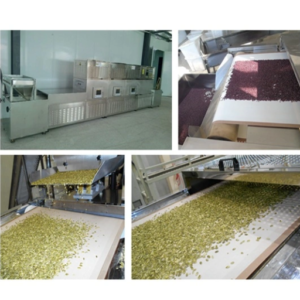
Regular Maintenance
To make sure that microwave tea drying equipment last longs and functions at its best, it is essential to do regular maintenance. Begin by cleaning the inside and outside surfaces regularly to prevent a build-up of residues which may interfere with the efficiency of the microwave. Examine and clean air filters and ventilation systems to ensure a proper flow of air and cooling. Inspect magnetrons and other electronic components for worn-out or damaged signs, then replace them accordingly. Also, lubricate moving parts using recommended lubricants while ensuring all safety interlocks function correctly.
Troubleshooting Common Issues
Some problems can be encountered while troubleshooting microwave tea-drying equipment. When equipment fails to start, check the power supply and circuit breakers. Inspect the turntable in case of uneven drying, ensuring that it rotates freely and evenly. If the microwave does not heat well, test the magnetron, high-voltage capacitor, and diodes for faults. If any uncommon noise or spark occurs, shut off immediately and investigate any damaged component or foreign object in the microwave chamber. Troubleshoot as per the manufacturer’s guidebook, but seek assistance from an expert if complexities persist.
Regular Maintenance Tips for Microwave Dryers
- Maintain cleanliness: One must frequently clean a dryer’s inside and outside surfaces. Remove tea remains or dust with proper cleaning agents and soft fabric to ensure hygiene and operational efficiency.
- Examine and service filters: Occasionally, clean or change air intake and exhaust filters. Airflow can be blocked by congested filters, which cause overheating, reducing drying effectiveness. Observe the filter’s cleanliness, keeping instructions given by the maker.
-
Evaluate electrical connections: Check each power connection regularly for wear signs or corrosion. Secure and intact electrical connections promote good operational conditions, thus preventing power supply challenges when using them.
Common Issues and Solutions for Microwave Drying Machines
- Inconsistent Drying Results:
- Issue: Uneven drying or tea leaves that are wet somewhere.
- Solution: Place the tea leaves uniformly in the dryer. Examine and clean internal rotating parts so they can move and distribute heat consistently. Set power levels according to what the manufacturer recommends for best drying results.
- Overheating:
- Issue: The microwave dryer gets too hot while in use.
- Solution: Clean air filters regularly to ensure proper airflow. Make sure ventilation passages remain unblocked at all times. From time to time, monitor the machine’s temperature settings, which should not exceed certain limits.
- Power Supply Problems:
- Issue: Failure to start or frequent shutdowns by the machine
- Solution: Look for worn-out electrical connection points due to corrosion. Firmly attach the power cord, then check it for any visible damage. If necessary, seek help from tech support or replace components of the power supply unit as appropriate when this problem persists.
By being proactive about these typical problems, you can keep your microwave drying machine efficient and reliable.
When to Contact Suppliers for Technical Support
It is advisable to contact suppliers for technical support in several situations. If your microwave drying machine has been malfunctioning continuously and the standard troubleshooting steps have not fixed the problem, you must communicate with the supplier. Similarly, if there is any need to replace some parts or make complex repairs that demand specialized skills or tools, genuine replacements, and guidance can only be obtained from the supplier of such machines. When software malfunctions or firmware bugs arise during usage, they should be solved by getting necessary updates through technical support from suppliers. Being proactive with supplier communication may help to nip in the bud, saving money over time through increased lifespan and better performance of a microwave drying machine.
Frequently Asked Questions (FAQs)
Q: What is microwave drying equipment, and how is it used in tea production?
A: Microwave drying equipment uses microwave energy to heat and dry tea leaves efficiently. This process ensures even dehydration and helps maintain the quality of tea products. It is often used with other machinery like conveyor belts for continuous drying.
Q: How does microwave vacuum drying benefit the tea-making process?
A: Microwave vacuum drying combines microwave energy with a vacuum to lower the boiling point of water, allowing for drying at lower temperatures. This method is beneficial in tea making as it preserves the tea leaves’ flavor, color, and nutrients.
Q: What types of microwave drying equipment are available for tea production?
A: There are various types of microwave drying equipment, such as tunnel microwaves, industrial microwave ovens, and microwave vacuum drying machines. These can be standalone units or integrated into a complete drying solution for high efficiency.
Q: What is the role of infrared in microwave tea-drying machinery?
A: Infrared technology is sometimes used alongside microwave equipment to enhance drying. By complementing the microwave heating, it helps achieve uniform drying conditions, thus improving the overall efficiency of the drying machinery.
Q: How does a conveyor belt system work within microwave drying equipment?
A: A conveyor belt system transports tea leaves through the drying chamber, evenly exposing them to microwave energy. This continuous movement aids in consistent dehydration and speeds up the drying process.
Q: What are the advantages of microwave equipment drying tea products?
A: Using microwave equipment for drying tea products offers several advantages, including faster drying times, energy efficiency, and maintaining high-quality tea leaves. The precise control over drying conditions ensures uniform results and high efficiency.
Q: Can microwave drying equipment be used for oolong tea?
A: Yes, microwave drying equipment can effectively dry oolong tea. It ensures precise dehydration while preserving the tea’s unique characteristics, such as its flavor and aroma.
Q: What is a microwave tunnel, and how does it function when tea is drying?
A: A microwave tunnel is an industrial microwave system where tea leaves pass through a tunnel-shaped chamber exposed to microwave energy. This continuous belt microwave system ensures consistent drying and sterilization of tea leaves.
Q: How do industrial microwave suppliers assist in the tea drying process?
A: Industrial microwave suppliers provide specialized machinery and technical support to optimize the tea drying process. They offer equipment such as microwave drying machines, heat pump dryers, and drying and sterilizing machines to meet specific requirements.
Q: Whom should I contact for more information about microwave tea drying equipment?
A: Contact us directly for more information about microwave tea drying equipment. Our team can provide detailed insights into machinery, industrial microwave systems, and the best drying solutions for your needs.













